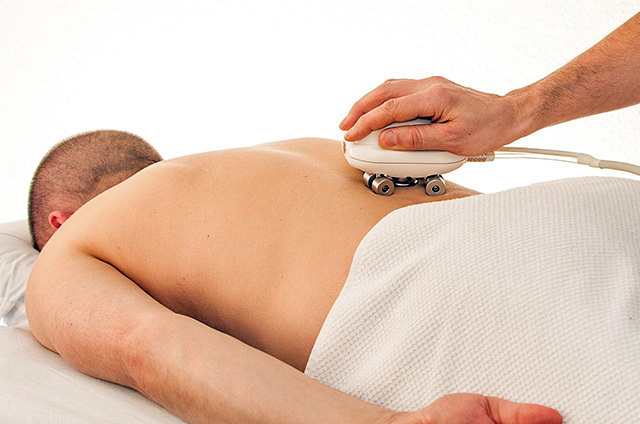When discussing degenerative spine conditions, you're referring to a group of disorders that trigger changes in your spine's structure. Over time, these progressive conditions can lead to pain and physical discomfort.
They're usually caused by wear and tear on the spinal discs and joints, resulting from the natural aging process or repetitive use among other factors.
 postural assessment
postural assessment Can Sports Lead to Generative Spinal Conditions?
Yes, certain sports can contribute to degenerative spinal conditions. High-impact sports like football or wrestling may put additional stress on your spine, potentially accelerating wear and tear on the vertebrae and discs.
Common Symptoms of Degenerative Spine Conditions
A wide range of symptoms may indicate the presence of a degenerative condition such as:
- Chronic back pain
- Sensations of numbness or tingling
- Difficulty in standing for long periods
- Instability while walking
- Reduced range of motion
The good news is that many degenerative spine conditions are treatable! With help from medical professionals who specialize in spinal health, you can regain strength and reduce discomfort significantly.
Various treatment options are available that tackle these issues at their root cause, including surgical intervention, physical therapy and medication management.
Common Degenerative Spine Conditions and Their Treatments
1. Osteoarthritis
Due to reasons like aging, mechanical damage, genetics, infection, or body weight issues like obesity, the protective cartilage between the joints in the spine can wear down or ‘degenerate’ over time. This often develops into spinal osteoarthritis.
Spinal Osteoarthritis typically affects middle-aged and older adults, causing pain in the neck or back. Other forms of osteoarthritis include those of the hip and the knee. For the latter, the causes are often similar to spinal osteoarthritis, from physical trauma or spinal joint overuse, to genetics and the effects of aging.
This is perhaps why people in some impact sports use knee supports and other forms of protection to prevent injury.
The good news is that lifestyle changes, physical therapy, medications, or supportive braces can help manage this condition successfully.
2. Degenerative Disc Disease
Degenerative disc disease is more aging-related compared to other degenerative spine conditions. In this condition, the protective intervertebral discs of the spine wear down naturally over time.
This often results in severe back or neck pain, sometimes coupled with tingling and numbness that radiate down the butt. In some cases, it can lead to other degenerative spinal conditions.
Treatments typically include exercises for strength and flexibility, medications for pain relief– and surgical intervention in rare cases.
3. Spinal Stenosis
Typically caused by age-related wear and tear, spinal stenosis is characterized by the narrowing of your spinal canal, which puts pressure on nerves leading to discomfort or weakness.
Non-surgical methods like physiotherapy and injections are common treatments. However, surgery can be considered if symptoms persist.
4. Herniated Discs
A herniated disc refers to the bulging or breaking open of an intervertebral disc, resulting in pinched nerves and debilitating pain in that part of the spine. Rest coupled with physical therapy often suffices to heal it but more severe cases might require surgical intervention for complete relief.
5. Spondylolisthesis
Spondylolisthesis occurs when a vertebra –one of the bony segments that make up the spine– slips out of place, putting pressure on the nerves and the rest of the spinal cord. This often results in pain and numbness, sometimes alongside weakness in the lower back and legs.
Initially, non-surgical treatments like physical therapy and medication are tried but if symptoms persist, then surgery may be considered to stabilize the spine.
Besides these, other common conditions to be aware of in the landscape of degenerative spine diseases include:
- Facet joint syndrome
- Sacroiliac joint dysfunction
- Cervical radiculopathy
- Spinal osteoporosis
- Bone spurs
Best of Both Worlds: Minimally Invasive Spine Surgery
Where conventional treatments for degenerative spinal conditions aren’t applicable or fail to provide relief, then minimally invasive spine surgery could be a viable option.
This cutting-edge technique utilizes much smaller incisions compared to traditional surgery, resulting in less tissue damage and quicker recovery times.
There’s nothing wrong with surgery, given today’s advanced technology in the medical field. But the risks and side effects are hard to overlook. As the team of spine care providers at CNSO would opine, due diligence is essential when considering surgical options.
Understanding a surgical procedure's risks and rewards is key to making an informed decision with your healthcare provider about what's best for your long-term spinal health.
Caring for your spine health is crucial to maintaining your overall wellness and quality of life. Though degenerative spine conditions may seem daunting, they're often very manageable. With timely diagnosis, suitable treatments - be it conservative or surgical therapy- and a proactive approach, you can effectively navigate these challenges toward a healthier spine journey. Remember, you're not alone in this venture!
Related Pages
- Medicine and Health
- Posture, Biomechanics & Injuries
- Sports Medicine Home
- See treatment for sporting injuries
- Back Stretches
Disclaimer


 Current Events
Current Events